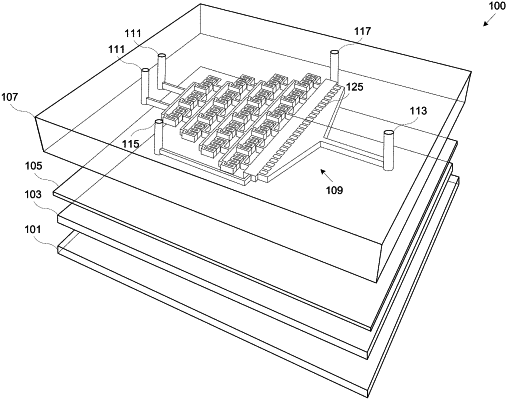| CPC C12M 41/34 (2013.01) [C12M 23/16 (2013.01); C12M 23/20 (2013.01); C12M 23/24 (2013.01); C12M 23/34 (2013.01); C12M 23/36 (2013.01); C12M 25/02 (2013.01); C12M 41/32 (2013.01); C12N 5/0075 (2013.01)] | 8 Claims |

|
1. A microfluidic device, comprising:
a glass or polymethylmethacrylate substrate; and
a layer of polydimethylsiloxane (PDMS) on and bonded to the substrate, the layer of PDMS comprising at least one reservoir having an inner wall of PDMS, the reservoir comprising:
at least two media inlets;
at least one cell chamber;
at least one cell inlet connected to the cell chamber;
at least one serpentine mixing channel network from the at least two media inlets to the cell chamber; and
at least one media outlet connected to the cell chamber;
wherein
the at least one serpentine mixing channel network is configured to provide a media gradient across the cell chamber, and
the inner PDMS wall of the at least one serpentine mixing channel network is coated with a glass substance that inhibits diffusion of a gas within the channel network.
|